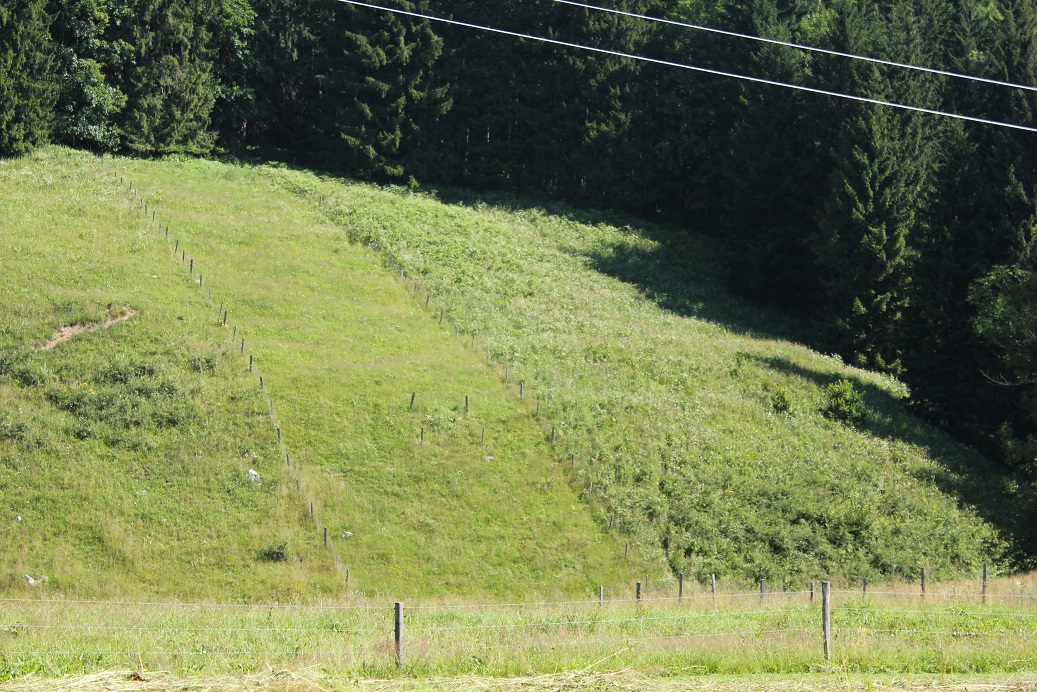Usage types
biodiversity
The diversity of the colorful, species-rich grassland also reflects the diversity of our cultural landscape, as it has developed over the centuries. Since the middle of the 20th century, the proportion of ecologically valuable, herb-rich extensive grassland has been continuously declining. Monotonous agricultural landscapes, the large-scale loss of extensively managed grassland areas, the expansion of settlement, industrial and traffic areas and the associated destruction and fragmentation of habitats, climate change and light pollution - all of these man-made factors are increasingly placing bees, wild bees and other flower-pollinating insects at risk facing existential problems. And with it many species of birds and small mammals, for which insects are an essential part of the food chain. There are now a variety of ways to reintegrate such valuable habitats into our cultural landscape. With regard to biodiversity, extensively used grassland is particularly important.
What each of us can do to counteract the death of insects is explained in more detail in the following video.
Plant communities and indicator plants
The individual plant species do not occur randomly next to each other in permanent grassland. Only species with similar site conditions form a plant community. The plant communities depend on the climatic conditions (dry, moist), the site characteristics (calcareous or silicate source rock) and the management (use, swell). The number of different plant communities is particularly high in extensively used grassland. Due to the intensification of productive locations and the abandonment of use of less favorable locations, some plant communities have already become very rare. Some plant species are of particular importance due to their strong connection to management or site characteristics. Their occurrence allows conclusions to be drawn about certain location characteristics and can therefore be used as bioindicators. They can be used to quickly determine the site characteristics, to recognize changes or management errors and to monitor the success of measures taken.
Primary and secondary succession
Changes in vegetation
The term refers to the replacement of one plant community by another as a result of changes in abiotic and biotic environmental factors.
Primary successions begin on unpopulated substrate such as raw soil, rock rubble, river gravel or moraines. Secondary successions begin on areas already covered with vegetation. Examples of secondary succession are the fallowing of grassland and arable land.

Dynamics in the growing season
As soon as there is no snow in spring and the temperatures begin to rise, the winter rest turns into the growing season as the meadows and pastures turn green. The start of growth depends on the altitude according to the altitude gradient of the temperature. At higher altitudes, an increasing shift in the start of vegetation is to be expected due to the usually longer snow cover period. This results in a very strong spatial differentiation of vegetation duration for the grassland in the Austrian mountain area. At higher altitudes, the often significantly shorter growing time is one of the most important reasons for the limited usage potential. Lower temperatures also cause the plant community to adapt, which, together with the soil's lower performance potential, leads to a reduction in yields.
This might also interest you
team

Dr. Bernhard Krautzer
Institute management for crop production and cultural landscape
Dr. Wilhelm Graiss
Head of department
Mag. MSc. Andreas Schaumberger
Grassland management and cultural landscape
Dr. Markus Herndl
Soil Science and Lysimetry Department, Head of the Eco-Efficiency Research Group






